Entertainment
Is There A “Best Wordle Starting Word”?
Published
3 years agoon
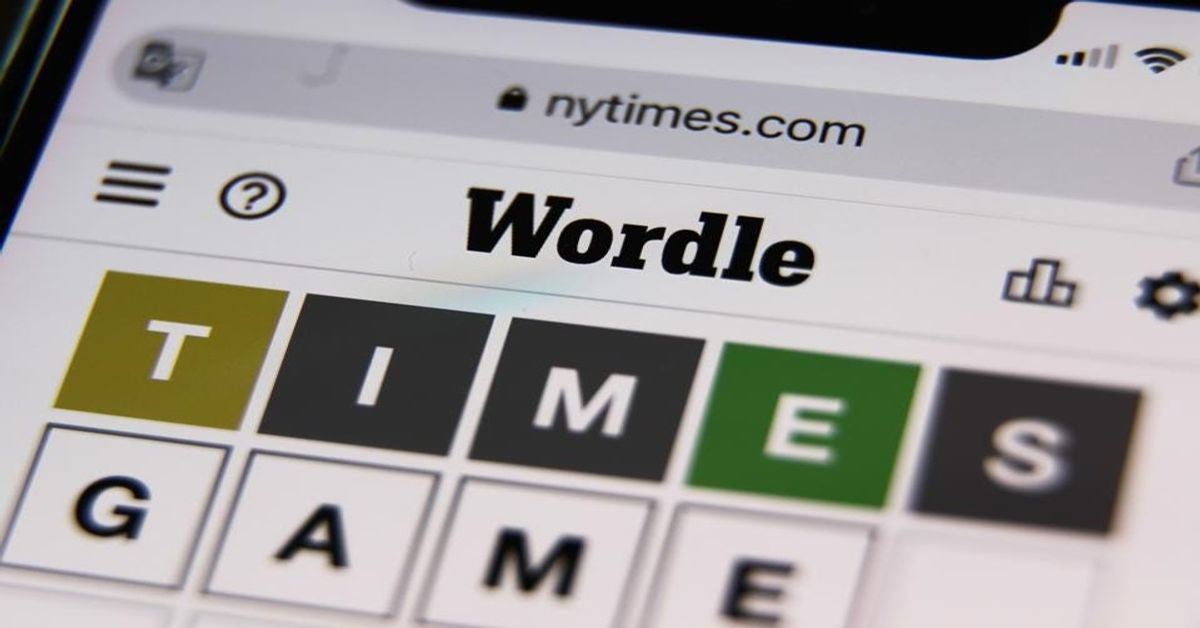
Wordle is a free virtual game that challenges users with a new word puzzle each day. This green, yellow, and black squares grid is the latest pandemic phenomenon.
Have you seen the articles with the title “This is the Best Wordle Starting Word According to Science, Language Experts, Math, AI, or A Panel of Geniuses?” We’re told about the most appropriate word to begin our Wordle in these articles.
Erik Kain, Forbes entertainment writer, said he understands that we all want to use strategies for success. That’s why he wrote a Wordle Tips and Tricks guide.
The only problem is that – it’s all a bunch of rubbish.
Kain said he didn’t give the “best” word at all in his version of the Wordle guide. Instead, he suggests that players pick words with common letters. Most of his tips are a little vague, though. That includes playing puzzle games, reading books, and becoming familiar with language and puzzle-solving.
For him, relying on the best word is crazy. There’s no single work that will guarantee you’re the most successful when playing Wordle.
Kain said if you want to guess the so-called best word every time, or if you’re just superstitious about why you buy a lottery ticket, good luck to you. Everyone has their strategy, and that’s fine.
Knowing the best Wordle starting word seems silly and pointless. How much does guessing the “best” word increase your odds? Given there are around 2,000 possible words at this moment, possibly not much. Sometimes, a wrong first guess can be helpful, too, by eliminating possible letters.
Also, this must become stressful after a while. Kain said he finds the game a bit boring. Still, he changed his starting world every single time. It’s more fun to think of new words every day. Plus, the various combinations and orders of letters make things more exciting. You could list down all the five-letter words in this blog and enjoy the best starting words for several days.
Remember, there is no such thing as the best starting word for Wordle
Start every game with whatever word that comes to your mind. Or something you read last night in a blog post or news article. It could be something you overheard from someone on your way to work.
It’s lousy because that’s how you’re feeling, or noisy because the neighbors are arguing, Or alone, because here you are on a Saturday night, sitting in the kitchen staring blankly at the wall and drinking by yourself. Perhaps, you’re just wondering where all the years have gone and if things will ever change. In any of the given situations, you’re solving a word puzzle.
Maybe it’s a train because you’ve always wanted to travel to that destination. There’s so much legroom, and there’s something romantic about it. It must feel like you are in a movie. But now, all you can think about is Double Indemnity and North By Northwest. Maybe a train isn’t that romantic, after all. But it’s still exciting.
You’re sick of flying because you’ve always been afraid that the plane will crash but too embarrassed to tell anyone. What a silly thing to be scared of—all the statistics say flying is safer than driving, right? Then again, you’re kind of afraid of driving, too. That one wreck you saw as a kid still comes back to haunt you now and then.
There you go, great ways to enjoy the things you love while attempting to reap the success of this new social media craze. Try it out. Good luck!
You may like
Entertainment
Taylor Swift’s Fortune: The Billionaire Behind The Eras Tour
Published
3 weeks agoon
June 17, 2025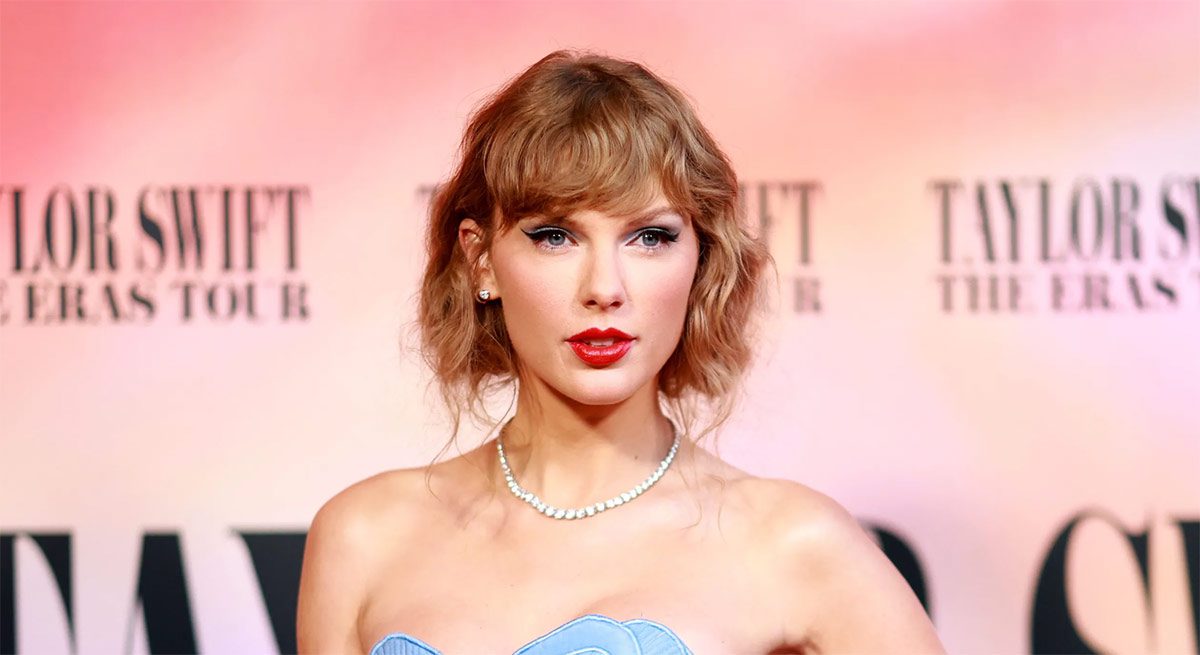
Taylor Swift’s journey in music has been nothing but extraordinary, phenomenal, even. From a young country music singer-songwriter to a global pop culture icon, she has consistently pushed the boundaries of what it means to be a successful artist. With a $1.6 billion real-time net worth as of this writing, her fortune is built not only on her musical talent but also from her savvy business acumen and deep connection with her fans.
Taylor Swift’s Rise to Stardom
First making a name in the world of country music, Taylor Swift began her musical journey as a teenage prodigy. She signed with Big Machine Records at the age of 14, and by 2006, she had released her self-titled album.
This gained her much-needed attention, thanks to the incredible mix of catchy melodies, heartfelt lyrics, and a distinct country-pop sound. A few tracks (Tim McGraw and Teardrops on My Guitar) became instant hits and anthems for her young listeners. Swift’s amazing ability to capture the complexities of adolescence resonated loudly with fans and, with much authenticity, built her a loyal following.
The release of her 2014 album, 1989, showcased Swift’s exploration of a broader musical territory. Her transition from country to pop was met with critical and commercial success, paving the way for a larger global audience and expanding her reach beyond country music. This album cemented her position as a mainstream pop icon.
Since then, Swift has garnered recognition, including 12 Grammy Awards, while solidifying her status as a cultural icon.
The Business of Taylor Swift
Another significant component of Taylor Swift’s success comes from her keen business acumen. Early in her career, she made one of her most strategic moves: securing the ownership of her songwriting rights. Her deal with Big Machine Records resulted in the label owning the rights to her first six albums.
To gain control over her creative work, Swift rerecorded and rereleased her music, calling them Taylor’s Versions. This was met with immense commercial success while raising awareness about the challenges artists face in the music industry. This positioned her as a voice for change and a powerful advocate for fellow musicians.
The business savvy didn’t end with Taylor Swift’s music. Endorsements, investments, and partnerships also added to her wealth. Then there’s the merchandising empire, which is a huge part of Taylor Swift’s financial success. Swifties, as her fans call themselves, are fiercely loyal and would buy exclusive merch tied to Swift’s albums, tours, and personal branding.
The Financial Impact of “The Eras Tour”
And the buck doesn’t stop there. The Eras Tour has been a game-changer for Taylor Swift. It set new records and reshaped the live music industry. It became one of the highest-grossing in history, with some estimates at over a billion dollars in revenue. While it showcases her universal appeal, it also boosted economies in cities around the world.
Each of Swift’s performances became a celebration of her musical journey. They were replete with stunning stage designs, elaborate setlists, and personal storytelling, creating an immersive experience that gave the show a once-in-a-lifetime feel.
The influx of Swifties impacted host cities economically. Local businesses such as hotels, restaurants, and transportation benefited greatly from the tour.
Taylor Swift: The Savvy Businesswoman
Carefully managing her brand and image led Taylor Swift to success beyond her music. She evolved with her audience but remained true to her values. Controlling her narrative, she has crafted a relatable yet aspirational persona that resonates well with millions.
Additionally, Swift has aligned her brand with various social causes, reinforcing her image as a musician and entrepreneur who uses her success to make a positive impact. She does this by using her platform to speak out on issues such as LGBTQ+ rights, women’s empowerment, political activism, and overall encouraging change.
The Road to a Billion
Taylor Swift’s road to billionaire status is a result of her diverse income streams. We now know her wealth comes from music royalties, specifically The Eras Tour, merchandise sales, and smart investments. She further strengthened her financial portfolio by investing in real estate, tech companies, and her own production company.
When you compare her to other artists who have reached billionaire status, such as Rihanna and Jay-Z, you’ll see that her success is distinguished by her complete control over her music and brand. While others entered other industries like fashion and beauty, Swift focused on her music, tours, and merchandise, creating a self-sustaining financial empire.
The Cultural Phenomenon
There is no doubt, Taylor Swift is a cultural phenomenon, and this is thanks to her enduring connection with her fanbase, the Swifties. She has built a solid relationship with them through genuine interactions, storytelling, and a sense of community. She has shown an openness in social media that, alongside her relatable lyrics, connected her with fans on a deeper and more personal level.
Taylor Swift has indeed shaped pop culture and the entertainment industry by setting trends, challenging norms, and advocating for causes she believes in. From fashion trends to how artists navigate their careers, Swift has made her impact. Most importantly, her authenticity has set her apart.
She has displayed the ability to evolve musically while maintaining her values, earning her the loyalty of her diverse following. Her lyrics are deeply personal, touching on various subjects like love, heartbreak, and self-discovery, echoing the sentiments of her listeners on a universal level.
Final Thoughts
From a country music star to a global icon, Taylor Swift has to thank her unparalleled talent, strategic thinking, and deep connection to her fans. Her savvy business moves, groundbreaking tours, and authenticity have helped her amass a fortune while transforming her into a cultural phenomenon.
Entertainment
On The Count Of Three Review
A past-due calling card for actor-director Jerrod Carmichael
Published
3 weeks agoon
June 13, 2025
WARNING: This review, and this film, contain discussions of suicide.
A Dark Premise, A Wobbly Execution
“On the Count of Three” opens with a bold premise: two childhood friends make a suicide pact and spend their last day on Earth tying up loose ends. It’s certainly fresh, but what makes “On the Count of Three” feel oddly stale despite its originality?
It’s not that we’ve seen too many comedies about suicide before. It does, I suppose, bear some resemblance to other race-against-the-clock (Good Time) or apocalyptic (Seeking a Friend for the End of the World) comedies. Maybe it doesn’t commit to darkness as much as these comedies; there’s certainly a humanist core deep down here.
But I think we all sort of know why this movie can’t fully work in 2022: it’s a movie Jerrod Carmichael made in 2020. The director and star has seen a long-overdue rise to stardom in these past months after a series of false starts. He’d already had a breakout role in a hit comedy, a sitcom starring vehicle, a special directed by Spike Lee, and a recurring feature on 2019’s biggest album.
Last month, the stars finally aligned. He came out as gay, dropped a smash-hit comedy special, and hosted SNL all in the span of a week. It’s no surprise that Annapurna Pictures quickly moved to release On the Count of Three, which they picked up at Sundance in January 2021.
Here’s the rub: On the Count of Three lacks the self-assuredness of Carmichael’s recent rise. It doesn’t feel like the film, or the version of this film, that he would’ve made today. His performance as both actor and director is good, but held to a certain restriction.
Two Leads, One Day, A Lot of Pain
Carmichael plays Val, a down-on-his-luck laborer who ventures to commit suicide with the help of his recently-hospitalized friend Kevin (Christopher Abbott).
While there’s a certain comical bleakness to Val’s life—he essentially shovels dirt for a living—there’s an interesting idea of suicidal ideation here. Val’s thoughts of killing himself don’t come from stagnation or trauma, but from dissatisfaction with achievement. He makes his first attempt right after getting a promotion, and we later learn that he had planned to propose to his now-pregnant partner, Natasha (Tiffany Haddish).
As director, Carmichael wisely avoids eating up the film and splits lead duties with Abbott. If anything, Abbott gets the real star showcase here, again proving his dynamic magnetism after a series of weirdo indie turns like Vox Lux, Possessor, and Black Bear.
The Black Comedy Balancing Act
Still, there’s a classic comedic duo chemistry here. Carmichael is the rock around which Abbott orbits. The setup also gives them plenty of opportunities to subvert that dynamic. When Val’s confrontation with his father (J.B. Smoove) gets heated, Kevin has to be the one to pull him back. But, when they come to blows, Kevin’s the one with the tire iron.
Black comedy is always a tricky balancing act. Penn and Teller Get Killed is notorious for going all-in on nihilism and failing to connect. I think this film mostly succeeds, but its uncertainty with its own dark philosophy is, again, reflective of a more self-conscious point in Carmichael’s career.
Bleak, But Also Soft Around the Edges
In Kevin’s first scene, he delivers a monologue about how doctors have been trying to fix him since he was eight years old, and if his life was worth saving, they’d have done it by now. Much of the film follows Kevin’s quest to kill a childhood doctor who molested him (played by Henry Winkler). Ultimately, it’s Val who pulls the trigger, but only after he decides to choose life. His decision to choose life only comes after a guilt trip from Natasha, who lays out how he’ll still be guilty in death if he abdicates his responsibility as a father.
All of which is to say, this is in many ways a philosophically bleak movie. But at the same time, the humanism of the direction kind of betrays that philosophy. There are a lot of monsters around the central players here, but the cashiers, receptionists, and other random side characters they meet along the way are given a stark innocence.
That Ending: On The Count of Three
I’m not sure how I feel about any of this. Is it too bleak? Not bleak enough? Or just not made with enough confidence to come out strongly in either direction? Whatever the case, I think this movie hums along perfectly fine. Until the last minute.
For the most part, On the Count of Three is very insular. We’re never not following Val and Kevin, and it takes place over the course of a day that they spend almost completely alone.
The final shot, which I won’t give away, finally pulls us out. We recognize that Val’s story is one of a million stories, all different, all wrestling with life and death, and all ending in the same rotten place. It’s certainly the most striking ending I’ve seen this year, and it made me think twice about the film overall.
Final Thoughts
When I’m reflecting on this year, I don’t think On the Count of Three will end up one of my favorites. Seeing how far Carmichael has come, this film’s steady, dry lob isn’t the catapult that Annapurna hoped it would be. Still, it’s a perfectly solid film. It’s absolutely worth seeing for its final shot alone. B
On the Count of Three is now playing at Landmark’s Ritz Five and available on digital.
Business
Failure to Launch: Why Pixar’s Lightyear is a Box Office Dud
Published
3 weeks agoon
June 12, 2025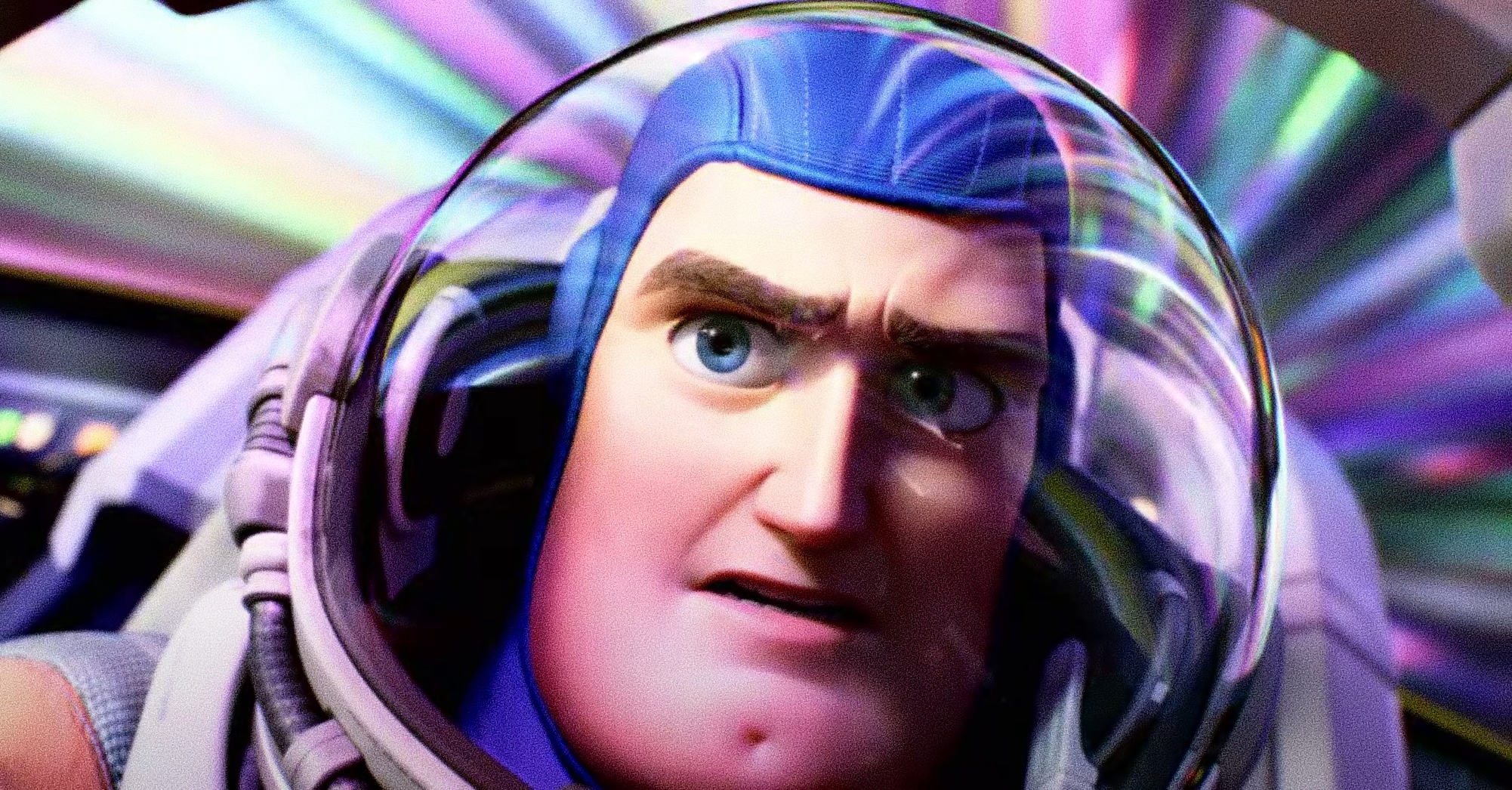
This summer’s movie season is now in full swing, and turnout is strong. Franchise films are facing a decline in dominance, but still hold a significant portion of the box office. In addition, original hits have proven that fresh storytelling can still break through.
Of course, challenges are there. With streaming habits, changing audience expectations, and the unpredictability of box office trends, studios are being kept on their toes. But one thing has remained constant: Pixar’s tentpole releases reliably soar past the billion-dollar mark.
Or so we thought.
Just before the pandemic, Pixar crossed a billion with Toy Story 4, one year after crushing it with Incredibles 2. Now, after a string of Disney+ releases, they’ve taken another big swing with the Toy Story spinoff Lightyear.
Then, bullish projections had Lightyear nearing a nine-figure opening weekend and cruising to $500m from there. Instead, the family-friendly tentpole opened second, failing to surpass a plummeting Jurassic World Dominion.
Why did Lightyear flop?
You probably seen the headline: Lightyear bombs. Disappointing on its face, but the ramifications go far beyond the potential for a Woody’s Roundup spinoff film.
The past couple Pixar films (Soul, Luca, Turning Red) released exclusively on Disney+. Many maligned the shafting of these exciting animated films. It’s especially upsetting for Turning Red, which could’ve easily been one of 2022’s runaway box office hits.
Lightyear is the test. A new direction for Pixar’s biggest franchise. The most means-tested Pixar film gets the theatrical boost, and if it does well, the other movies follow. For this reason, it is a big deal that Lightyear flopped. So, what happened?
If you frequent Facebook, you’ve no doubt seen the “get woke go broke” narrative. A gay kiss, which was removed from the film and added back after Disney’s March “Don’t Say Gay” controversy, has gotten the film banned in several countries. Domestic concern trolls like Ben Shapiro, enamored by Saudi Arabia’s officially-sanctioned bigotry, ratcheted up scare pieces on the film in the past week.
In today’s new heights of parental hysteria, it wouldn’t surprise me if a few thousand families stayed home due to right-wing fearmongering. Still, history doesn’t really support the notion that this would have a substantial impact on box office. Multiverse of Madness made big bank with equally-major LGBTQ+ characters. If anything, it could be said that these films’ lack of a Chinese release upsets their box office returns, but that doesn’t explain a poor opening weekend.
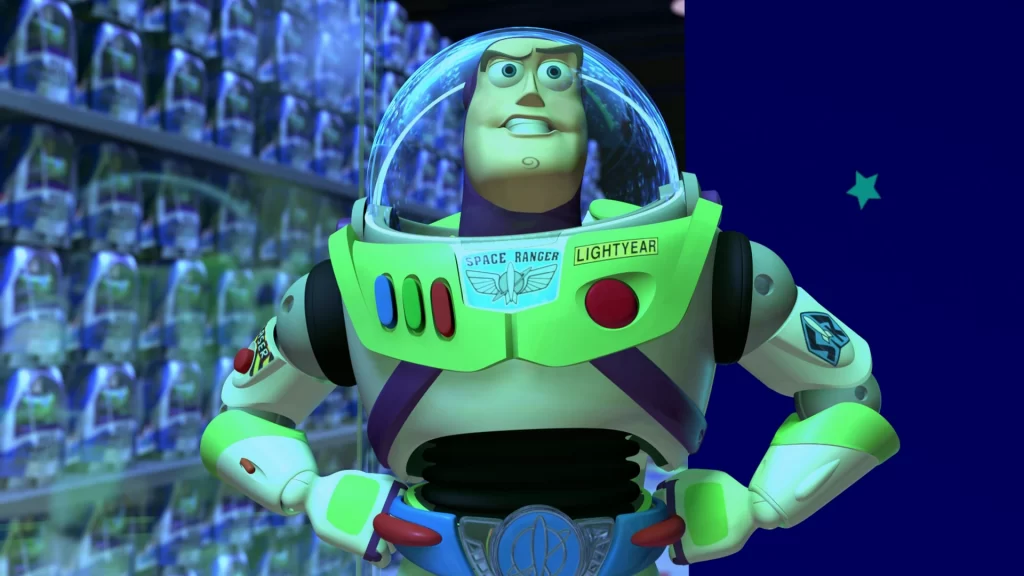
Still others have pointed to the shafting of Tim Allen, replaced in the role of Buzz by Chris Evans. Allen’s performance in the Toy Story movies is iconic and truly fantastic. Still, I question the notion that $30 million went missing from beleaguered Tim Allen fans.
The other explanation? Marketing. Lightyear got off on the wrong foot with an unclear premise. Evans’ ill-fated explanation tweet only made matters worse. Is this about a real Buzz Lightyear in the Toy Story universe?
One could argue that even today, Disney hasn’t totally gotten their story straight. The movie itself explains that this is the movie that the Buzz Lightyear toy comes from. An ‘80s sci-fi movie that Andy saw. In theaters. In 1995. That’s styled like a 2022 blockbuster. You can see how people got lost.
On the other hand, we might just be asking the wrong question.
Did Lightyear flop?
Of course, it’s too early to say definitively if Lightyear is a flop. That’s not what I’m arguing here.
We’re dealing with a case of Hollywood math, the same system by which Suicide Squad’s $750m profit is considered a dismal failure. Disney had the wrong idea about this movie as soon as they pushed it for a tentpole opening.
Lightyear’s $50m opening puts it in league with Coco and Cars 3, solidly ahead of true Pixar flops like The Good Dinosaur and Onward. It’s the highest opening for an animated film since Frozen II. With a COVID handicap still in play, that’s impressive.
Pixar’s mistake was to angle for a major franchise opening. They applied a post-pandemic framework to the nine-figure openings of Toy Story 4 and Finding Dory. They thought, reasonably enough, that parents would pay big money to turn out for a new, fresh installment in the beloved Toy Story franchise.
Herein lies the real problem. Lightyear is not, in any meaningful sense, a Toy Story movie. It has name recognition, which Hollywood has come to treat as a golden rule over the past two decades. But it follows a completely different character, played by a completely different actor, in a completely different world.
Like I said earlier, Tim Allen’s Buzz Lightyear is truly great. But the character is only a toy with an inflated ego, being constantly hit in the face by reality like Sideshow Bob stepping on infinite rakes. So much as wondering about “the real Buzz Lightyear” misses the point of the character.
Lightyear may marginally be a victim of conservative backlash, or poor promotion, or even COVID woes. But fundamentally, it’s a victim of its own premise.
What happens now?
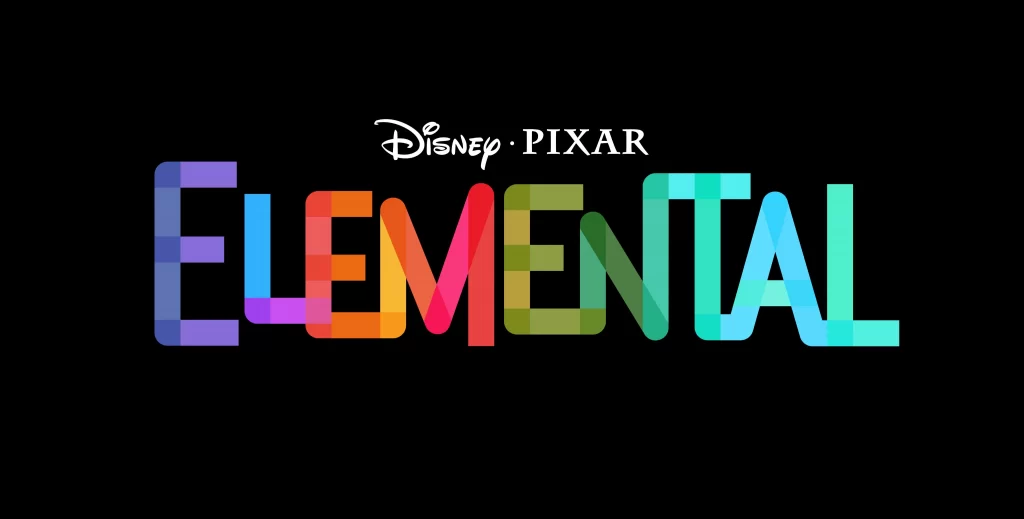
Pixar’s next film, Elemental, is already slated for a theatrical release next summer. Barring a huge COVID flare-up or other societal collapse, they probably won’t go back on that. Down the line, other Pixar flicks in development may be looking at streaming releases if Disney has their way.
If anything, The Bad Guys’ recent success proves feature animation is doing fine. In a few weeks, the new Minions movie will likely confirm that. November’s Strange World will tell us if Disney’s animation department has any sort of long-term problem.
I can’t really recommend that you see Lightyear—in fairness, I haven’t seen it myself. If you want variety at the movies, the answer isn’t to support whatever Disney puts out. Live a little and see something out of your comfort zone. If Lightyear’s fate is already sealed, at least it won’t be at the expense of film as a whole.

Top 12 Uses for The Metaverse That Will Change Your Life

Top 10 Best Places to Buy a Mid Century Modern Office Chair

The Best Online Payroll Services [Updated for 2025]

Top 10 Small Business Organization Tools for 2025

8 Best Equipment for YouTube Every Content Creator Needs

Merck Seagen Buyout: What to Know About the Deal

The Rise and Fall of Juul: Once a Silicon Valley Darling, Now Banned by FDA

What’s the Deal With Elomir? Is Axis Klarity a Scam?

Why Having an Advisory Board Could Make or Break Your Startup

Top 10 Best Places to Buy a Mid Century Modern Office Chair

Loom Review: Features, Use Cases, and How It Stacks Up Against Zoom

8 Best Equipment for YouTube Every Content Creator Needs

The Rise and Fall of Juul: Once a Silicon Valley Darling, Now Banned by FDA

The Best Ways to Recession Proof Your Business
Trending
- Business2 days ago
Top 10 Best Places to Buy a Mid Century Modern Office Chair
- Technology3 days ago
8 Best Equipment for YouTube Every Content Creator Needs
- Technology3 days ago
Top 10 Small Business Organization Tools for 2025
- Technology1 day ago
Top 12 Uses for The Metaverse That Will Change Your Life
- Business2 days ago
The Best Online Payroll Services [Updated for 2025]





